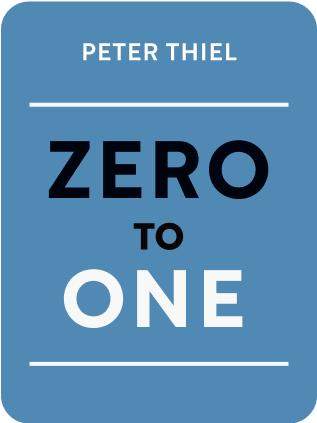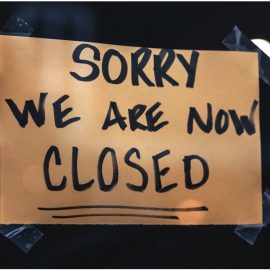

This article is an excerpt from the Shortform summary of "Zero To One" by Peter Thiel. Shortform has the world's best summaries of books you should be reading.
Like this article? Sign up for a free trial here .
Do you have a great discovery, and want to know how to sell your product? There are several strategies you can use.
Learning how to sell your product is an important part of your launch plan. Without knowing how to sell a product, your amazing tech could go unnoticed.
How to Sell Your Product
Many Silicon Valley entrepreneurs underestimate the importance of distribution, which encompasses whatever it takes to sell your product (advertising, sales, marketing, and distribution channels). But understanding distribution and having a plan for it is critical to a company’s success—it should be part of designing your product. Learning how to sell your product is a huge part of your success.
We often overlook the importance of distribution because society in general looks down on salespeople and advertising as dishonest and manipulative. Silicon Valley entrepreneurs take this a step further—because of a bias toward building rather than selling, they often believe their product is so superior it should sell itself: if they build it, customers will come.
But customers won’t buy your product automatically; you have to sell it, which is more challenging than many entrepreneurs and engineers realize.
The Hidden Art of Selling
Silicon Valley “nerds” should care about advertising because it works—or it wouldn’t be a $150 billion industry that employs more than 600,000 people.
But sales works differently than many people think. They think they’re not influenced by pitches because they don’t run out and buy the advertised items. But advertising’s intent isn’t to get you to buy a product right away, it’s to leave an impression with you that will drive sales later.
The sales process is often subtle—selling is a hidden art that secretly drives the economy. And knowing how to sell your product from the get-go can give you a leg up.
All salespeople are actors; like actors, their priority is persuasion, not transparency. We react negatively to inept salespeople (“used-car salesman” is a slur), but the best salespeople are masters who sell without our realizing it.
For example, Mark Twain’s character Tom Sawyer persuaded his friends to whitewash a fence for him. That took talent, but his masterstroke was convincing them to pay him for the privilege of doing so. They never caught on.
Sales still works best when hidden. Sales is never mentioned in anyone’s job title—for instance,
advertising salespeople are “account executives;” fundraisers trying to sell you on a cause work in “development,” and those who sell companies are “investment bankers.” Yet sales ability in each position separates superstars from average performers.
While engineers like to assert that a great product will sell itself, there’s another business maxim that the best product doesn’t always come out on top. If you’ve created a new product but not an effective way to sell it, you have a bad business regardless of your product’s quality. That’s why knowing how to sell a product matters.
How to Sell Your Product: Distribution & Strategies
Regardless of how great your product is, you still need an effective distribution plan. Furthermore, even if your product is no better than average, it’s possible to create a monopoly with a superb sales and distribution plan. That’s how important distribution is. Knowing about how to sell your product and distribute it, whatever your strategy, matters.
There are two considerations for planning a sales strategy for your product: customer lifetime value and customer acquisition cost.
- Customer lifetime value or CLV is the profit you earn over the course of your relationship with a customer. For example, if you sell low-priced prescription eyeglasses at about $100 a pair and the typical customer needs only a few pairs over her lifetime, the CLV would be only a few hundred dollars.
- The customer acquisition cost is the amount you spend to get a customer (your marketing cost divided by the number of customers). You want your customer lifetime value to exceed the amount you spend to get a customer.
Generally, the pricier your product is, the more you need to spend on selling it (it makes economic sense to spend the money because you’ll get a big return). In contrast, for a low-priced product like $100 eyeglasses, you’d want an economical method of advertising that wouldn’t eat up the profits from your sales.
Distribution methods can range from viral marketing (the cheapest method) to typical marketing, typical sales, and complex sales (the most costly method).
The power law applies to sales/distribution. One sales method is likely to work far better than any other. Rather than trying a little of everything (which will get you nothing), find and focus on the method that exceeds all others in its returns.
Startups fail more often because of poor distribution than because they have a bad product. Getting the right channel to work is the key to a successful business.
Complex Sales
One way to know how to sell your product is the complex sale. Some of the most valuable tech products (like Palantir’s software) require complex sales totaling seven figures or more.
(Shortform note: a complex sale is a business-to-business sale that involves multiple stakeholders in a company, takes considerable time to negotiate and finalize, is potentially high risk for the buyer, and involves a lot of money. Read more about complex versus traditional selling in the Shortform summary of The Challenger Sale.)
The CEO, rather than a vice president of sales or a sales rep, needs to personally handle the sale and negotiation if the deal is worth $1 million to $100 million. You might only make a sale like this once a year, and you need to follow up during the installation and provide ongoing service and maintenance.
Knowing how to sell a product matters. Companies engaging in complex sales need to achieve 50% to 100% year-over-year growth over 10 years in order to succeed. This will seem small for entrepreneurs envisioning exponential growth for their companies. But it takes time to build the customer relationships necessary for complex sales to succeed. A new customer won’t sign a deal far exceeding your previous deals. You’ll need a track record and customer references you can build on to achieve bigger deals.
Traditional Sales
Many sales don’t reach the complex level. Those ranging from $10,000 to $100,000 won’t require the CEO’s involvement. To handle most sales, you need a process for getting your product in front of a wide audience at a reasonable cost. This is another valuable way to understand how to sell your product.
Sometimes a traditional approach that starts small with a sales rep is an effective strategy. For example in 2008, Box, a startup selling cloud storage, struggled to sell its storage solution at a time when people didn’t understand cloud storage or realize they needed it. Box’s sales reps started meeting with small groups of users who had storage issues and expanded from there. For instance, they sold a small account to the Stanford University Sleep Clinic. Ultimately, the university started offering a Box account to all students and faculty.
The key to sales success for Box was to start small rather than attempting a complex sales approach with top university officials, where it would have been tough to get a foot in the door.
Sometimes the product itself can be a kind of sales tool. For example, ZocDoc is a platform that allows people to schedule medical appointments online. When doctors subscribe for a monthly fee, their patients can use the service. The company uses an army of sales reps to recruit doctors to join.
However, there’s a network effect that increases sales as well. The greater the number of doctors who join, the more valuable the service is to consumers/patients—and the greater the number of patients who use it, the more valuable it is to doctors in saving them money and time.
As you develop your business plan, you can learn how to sell your product and make profits for your startup.

———End of Preview———
Like what you just read? Read the rest of the world's best summary of Peter Thiel's "Zero To One" at Shortform .
Here's what you'll find in our full Zero To One summary :
- Why some companies genuinely move the world forward when most don't
- How to build a company that becomes a monopoly (and why monopolies aren't bad)
- Silicon Valley secrets to selling products and building rockstar teams







Hello, I have such an amazing idea I have patented but struggling with being able to get it out into the Market. I was hoping someone that may be able to have Mr. Peter Thiel contact me. Maybe we can do some Buisness together.
Thank you,
Isidro Gonzales